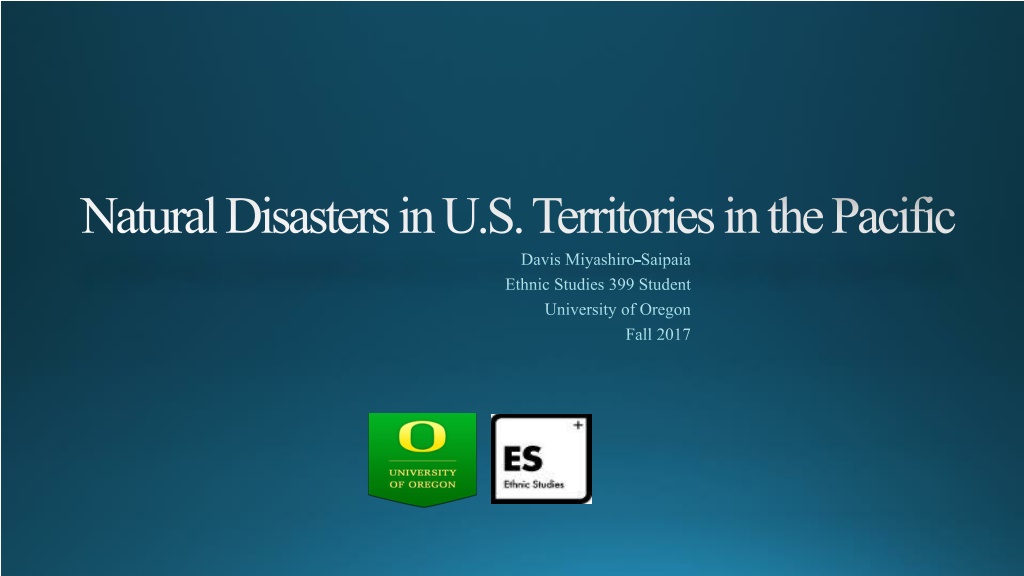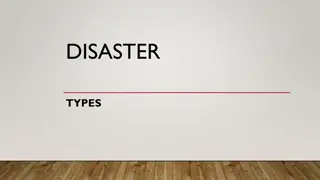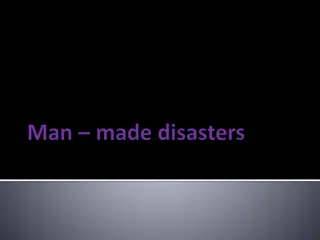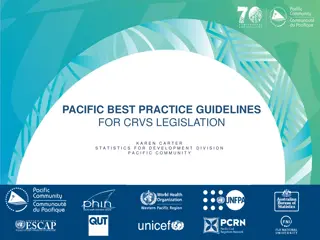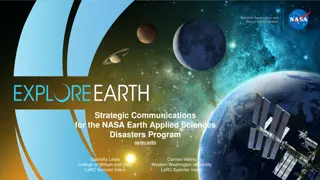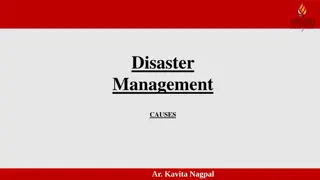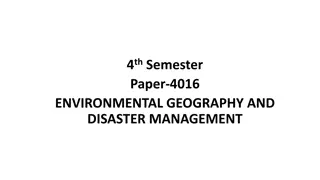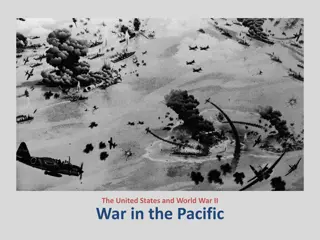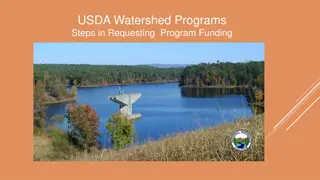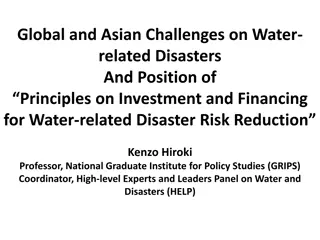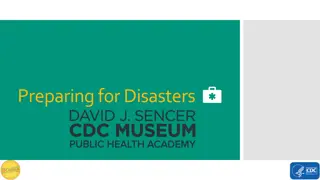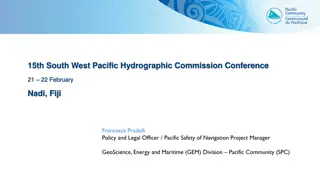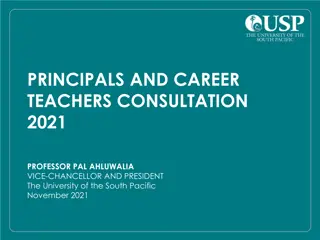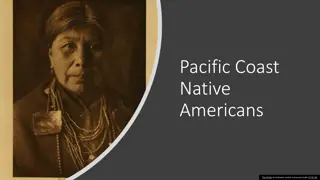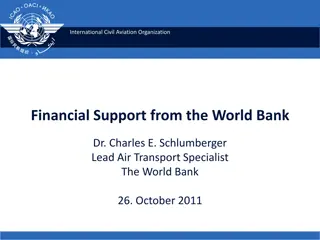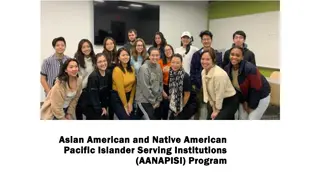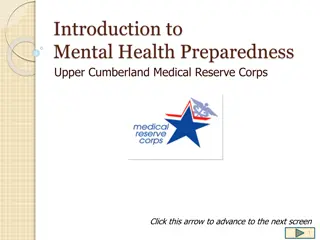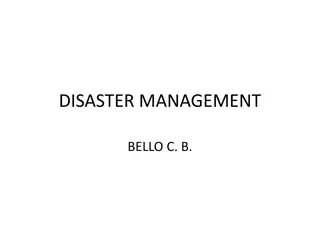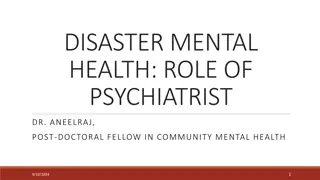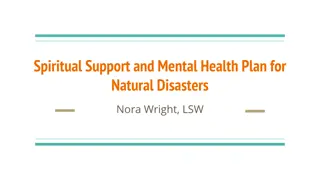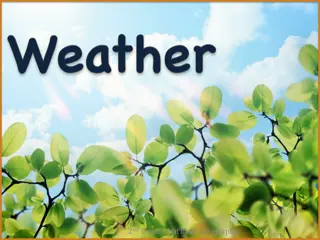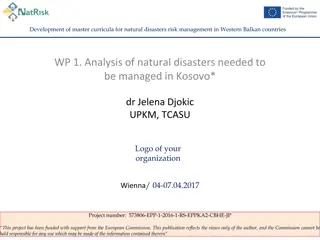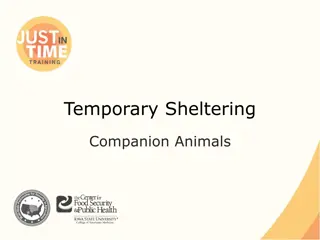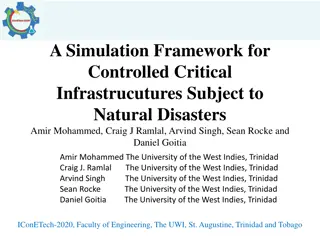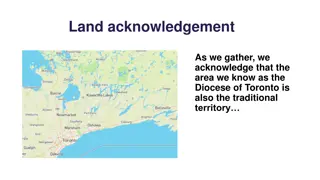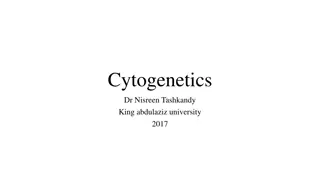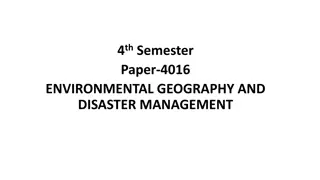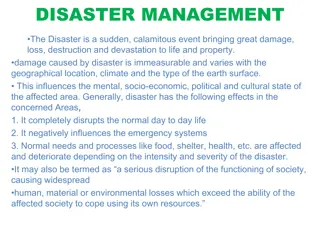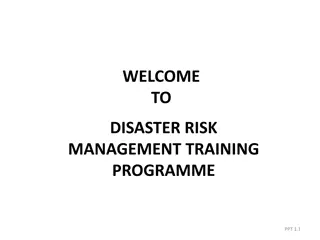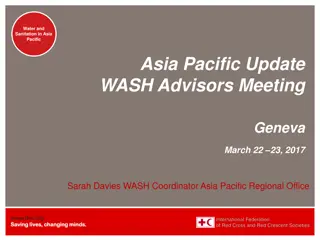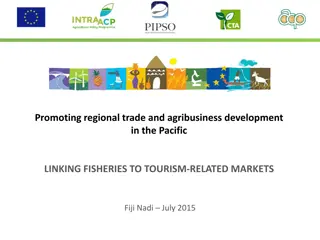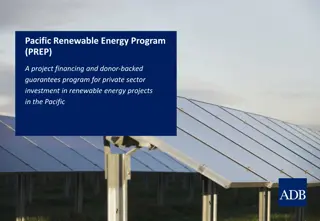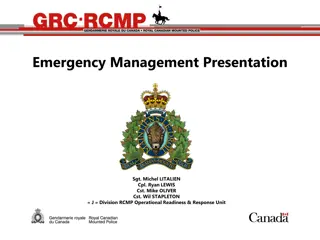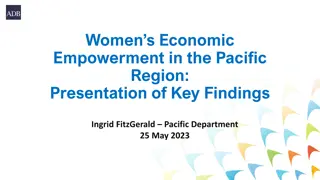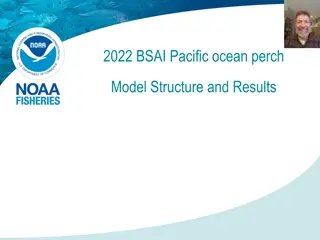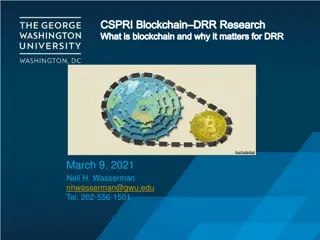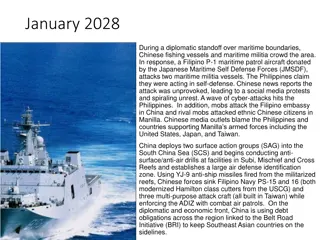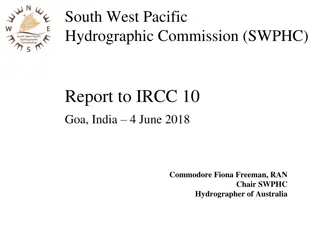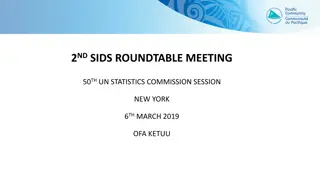U.S. Territories in the Pacific: Natural Disasters and Government Response
Explore the impact of devastating typhoons like Pongsona and Omar on Guam, U.S. involvement in disaster relief efforts, from official declarations to emergency assistance programs, highlighting the coordination with agencies like FEMA and the U.S. Army Corps of Engineers.
Download Presentation

Please find below an Image/Link to download the presentation.
The content on the website is provided AS IS for your information and personal use only. It may not be sold, licensed, or shared on other websites without obtaining consent from the author. Download presentation by click this link. If you encounter any issues during the download, it is possible that the publisher has removed the file from their server.
E N D
Presentation Transcript
Natural Disasters in U.S. Territories in the Pacific Davis Miyashiro-Saipaia Ethnic Studies 399 Student University of Oregon Fall 2017
Typhoon Pongsona (Guam) Hit December 8th, 2002 Category 4 Hurricane 3rdmost intense Typhoon to hit Guam Damages totaled $700 million (USD)
U.S. Involvement December 8th, 2002: On the same day that Typhoon Pongsona struck Guam, President George W. Bush declared the island a major disaster area. December 13th, 2002:13 American Red Cross shelters housing 3,199 people on Guam.
U.S. Involvement December 13th, 2002: U. S. Army Corp of Engineers (USACE) coordinating debris removal, overseeing water needs and sewage disposal; and installing FEMA generators warehoused on island December 16th, 2002: The Food and Nutrition Service of the U.S. Department of Agriculture approved an Emergency Food Stamp Program for Guam.
U.S. Involvement January 7th,2003: More than 146 generators, ranging in size from 5.5 kW to 750 kW hade been installed by the U.S. Army Corps of Engineers (USACE). January 7th, 2003:In coordination with GovGuam and FEMA, generators had been installed at police and fire stations, schools and shelters, hospitals, and for senior citizens or others who have special needs.
U.S. Involvement March 4th, 2003: The Guam Power Authority had completely restored power to the island. Ends the need for emergency generators at critical facilities.
Typhoon Omar (Guam) First Hit Guam on August 28th, 1992 Category 4 Hurricane Worst Typhoon since Typhoon Pamela in 1976 Damage estimated at $457 million (USD)
U.S. Involvement (1992) August 29,1992: President Bush declared Guam a disaster zone (making residents eligible for Federal grants, loans and other emergency assistance) September 17,1992: President amended his August 28thdeclaration of disaster zone in Guam (this waives Territory and local cost sharing requirements = maximum federal assistance for the people)
U.S. Involvement (1992) September 23,1992: President signed into law H.R. 5620 an Act that provided supplemental appropriatons for disaster assistance to meet urgent needs resulting from Hurricane Andrew, Hurricane Iniki, and Typhoon Omar (provided $10.6 billion in emergency funding for FEMA and SBA. October 31st: President made available emergency appropriations for Department of Housing and Urban Development (helped provide assistance in Guam)
U.S. Involvement December 30th: President made avalaible $10.5 million in previously appropriated funds (For Hurricanes Andrew, Iniki, and Typhoon Omar)
Typhoon Soudelor (Mariana Islands) First hit Saipan August, 2nd2015 Category 4 (when it hit landfall) FEMA team sent in before Typhoon hit Damaged estimated at $21 million (USD)
US Involvement August 3rd, 2015: U.S. Coast Guard Sector Guam deployed nine Coast Guard members on Aug. 3rd to Saipan to help with the assessment of the Port of Saipan, the gasoline spill response, and port recovery efforts. August 6th, 2015: President Obama declared Northern Mariana Islands a major disaster zone.
U.S. Involvement August 8th, 2015: FEMA expected a dispatched barge from Guam to arrive in Saipan on this date with 11 electrical generators. (used to help get the island s water system back into operation) August 11th, 2015: Delta set up a microsite through the airline s partnership with the American Red Cross so that Delta employees worldwide could make a donation to support international services and the disaster relief effort.
U.S. Involvement August 17th, 2015: Relief supplies and humanitarian aid from FEMA, American Red Cross, and US Department of Defense began to arrive in Saipan. September 22, 2015: Federal aid to Typhoon Soudelor survivors on Saipan had passed $25 million (FEMA approves $20 million and the U.S. Small Business Administration approves $5.9 million)
2009 Earthquake/Tsunami of Samoa Earthquake occurred September 29th, 2009 with a magnitude of 8.1 Four Tsunami waves 15-20 ft. high reached up to a mile inland after the earthquake. At least 1 village at first confirmed to be wiped out Damages first estimated around $150 million (USD)
U.S. Involvement September 29th, 2009: American Samoa received an expedited Federal Major Disaster Declaration on Sept. 29th, 2009 making disaster funds available for Individual assistance, Public assistance and Hazard Mitigation September 29th, 2009: A Coast Guard C-130 plane loaded with aid and Federal Emergency Management Agency officials flew from Hawaii to American Samoa's capital of Pago Pago
U.S. Involvement September 30th, 2009: This United States Navy frigate arrived in American Samoa on September 30thwith food, water, commodities and two Seahawk helicopters available for search and recovery operations. October 1st, 2009: A Hawaii National Guard C-17 cargo flight from Honolulu arrived in American Samoa at 1 a.m. local time (8 a.m. EDT) on October 1st. This flight included over 40 National Guard personnel, four vehicles, hazmat materials, communications equipment, cots, blankets, food and water.
U.S. Involvement October 1st, 2009: An additional Hawaii National Guard C-17 cargo flight arrived at 4 a.m. (11 a.m. EDT) on October 1stin American Samoa. This flight included 20 additional National Guard personnel, five vehicles, hazmat materials, communications equipment, cots, blankets, food and water. As of October 4th, 2009: The United States Coast Guard (USCG), National Guard, and United States Navy had provided critical transport of the life-saving and life-sustaining supplies and equipment to meet the immediate needs of the survivors, including more than 26,000 meals, 14,000 liters of water, 1,800 blankets, 800 tents, more than 800 cots, and nine pallets of medical supplies in support of the territory's mass care operations.
Sources: https://reliefweb.int/report/northern-mariana-islands-united-states-america/federal-aid-saipan-passes-25-million https://www.nbcnews.com/news/asian-america/recovery-begins-saipan-after-typhoon-soudelor-n409196 https://www.saipantribune.com/index.php/coast-guard-responds-to-typhoon-soudelor/ https://www.fema.gov/news-release/2009/10/01/federal-aid-continues-arrive-american-samoa https://www.fema.gov/news-release/2003/03/12/super-typhoon-pongsona-first-100-days-over-300-million-disaster-relief-and https://www.fema.ov/disaster/1446 https://www.fema.gov/disaster/4235/updates-blog-and-news https://www.eeri.org/site/images/eeri_newsletter/2010_pdf/Samoa-Rpt.pdf
